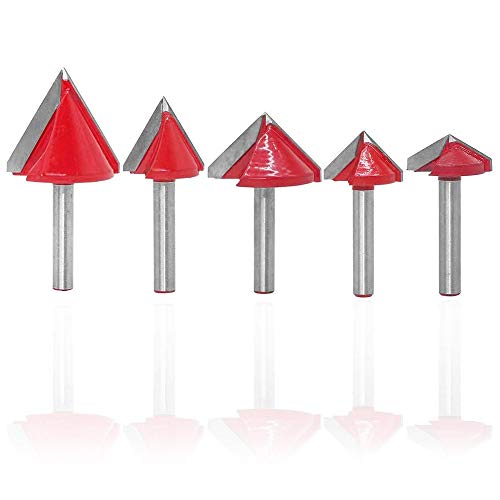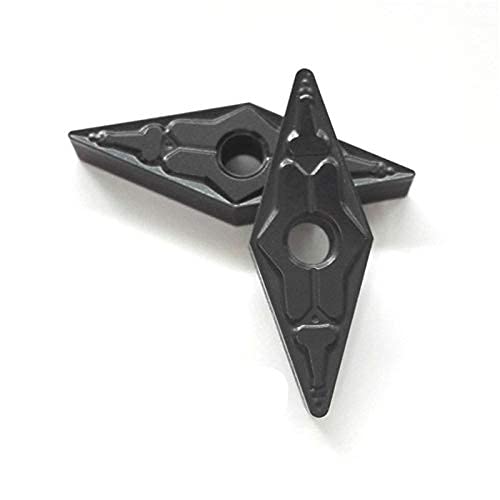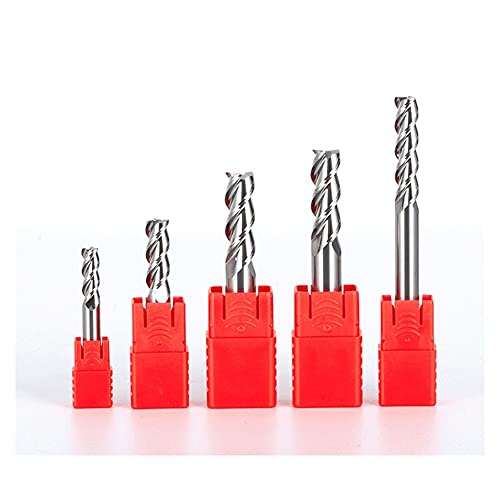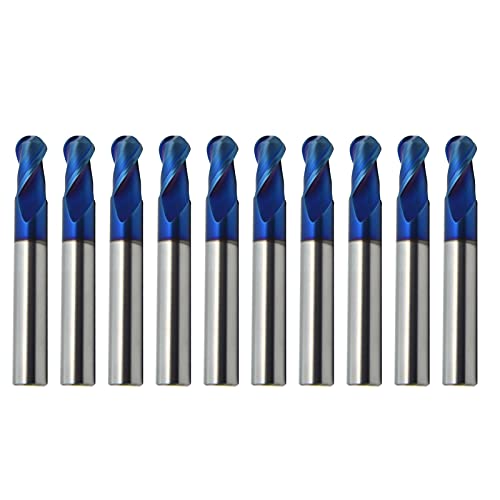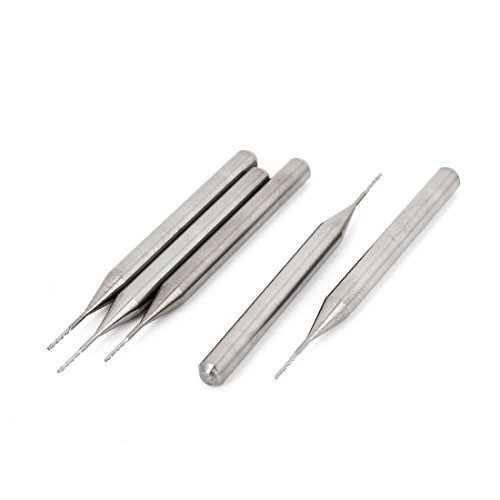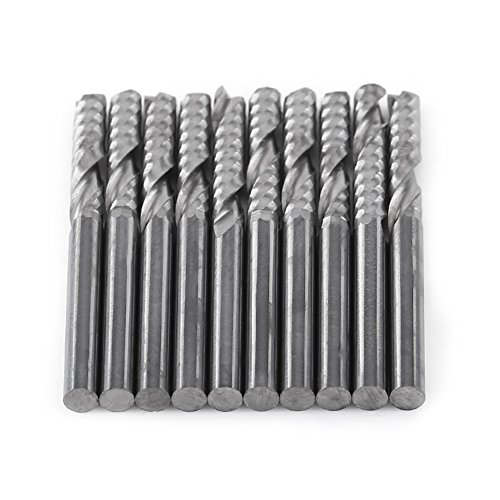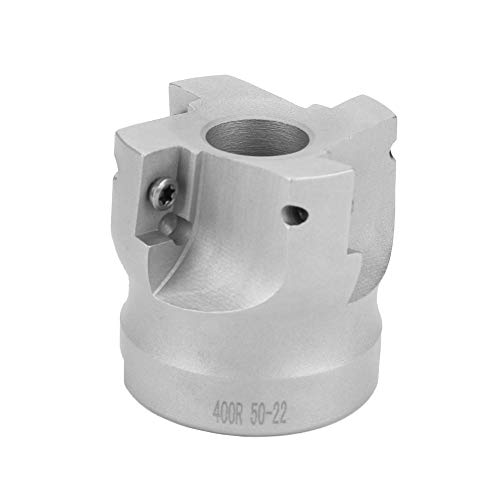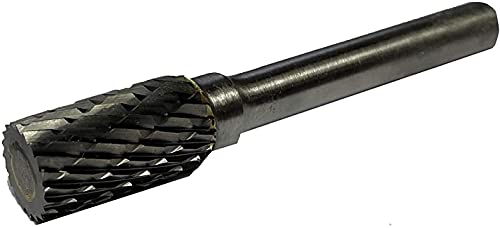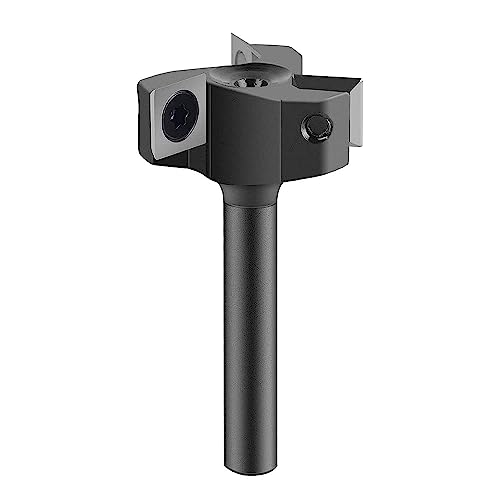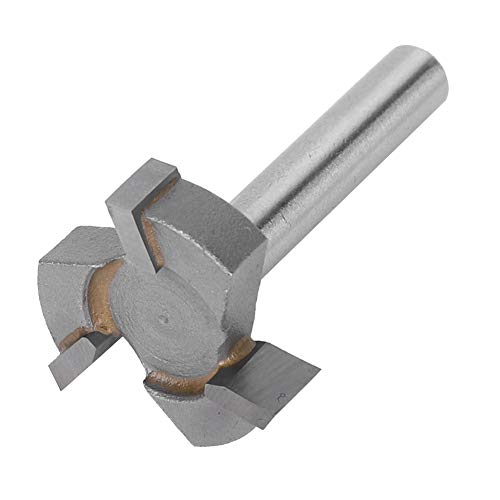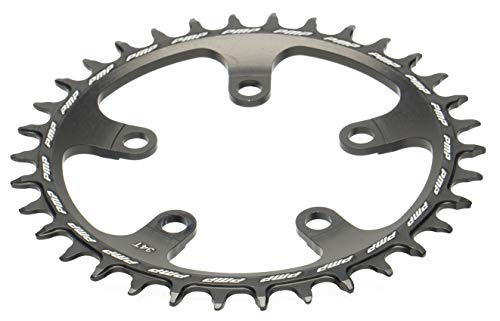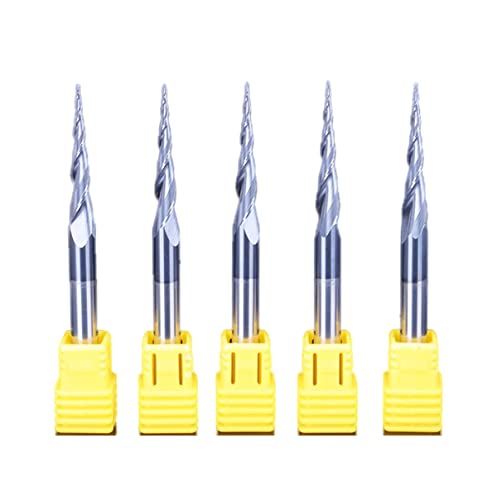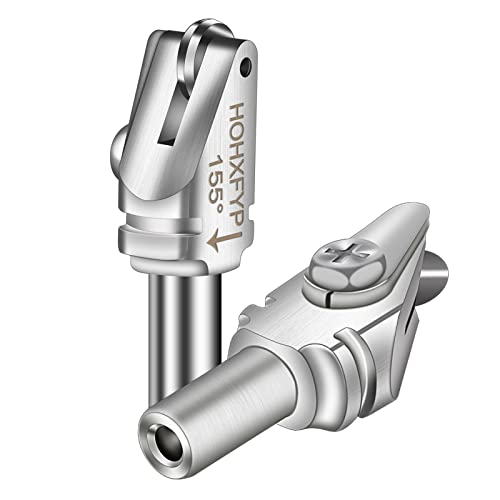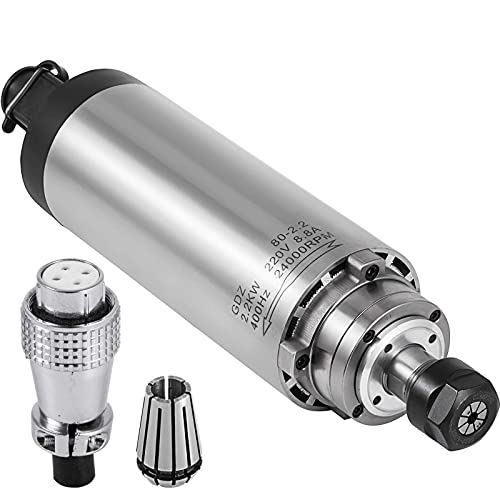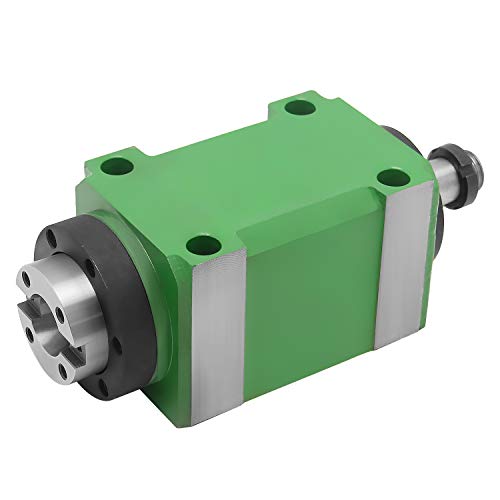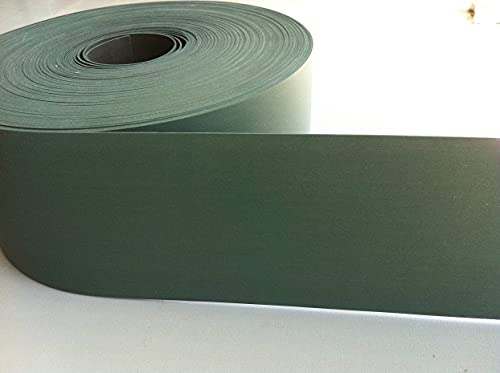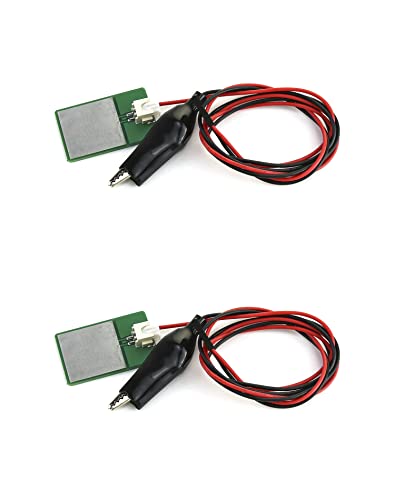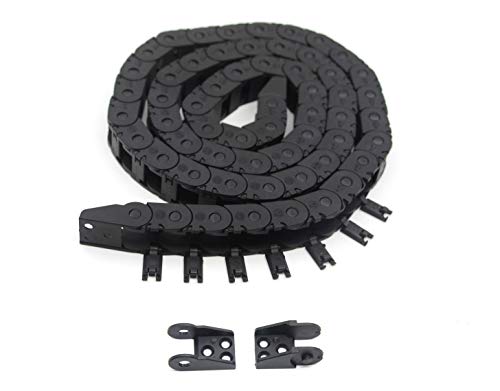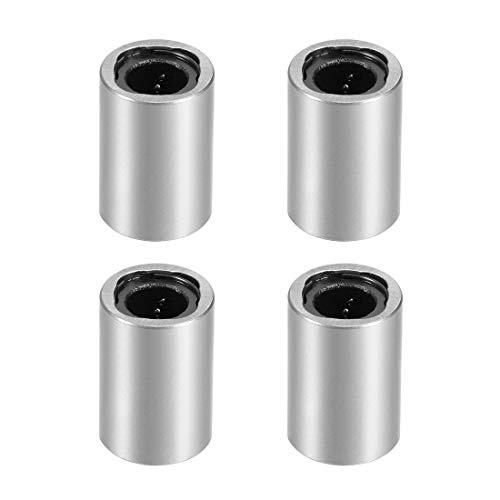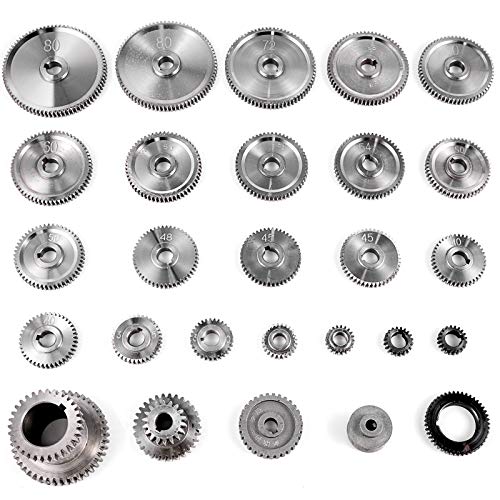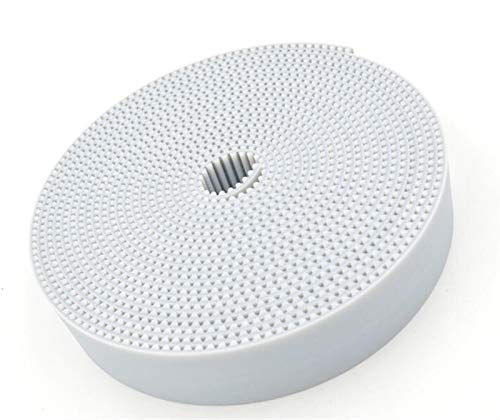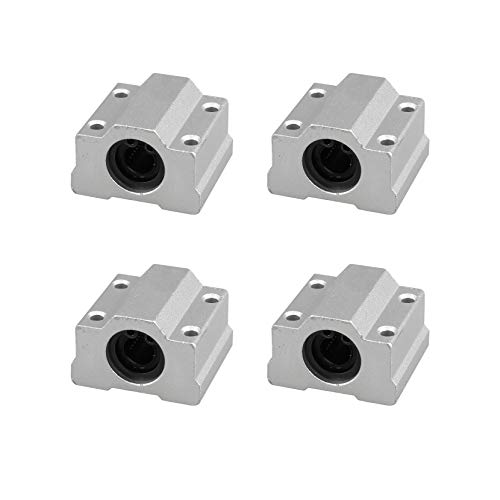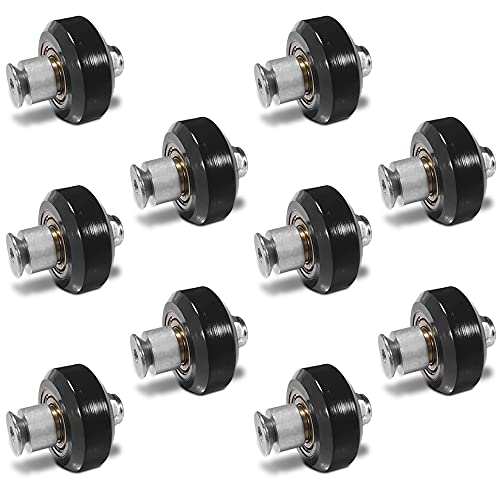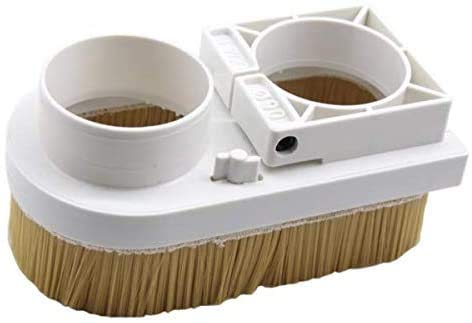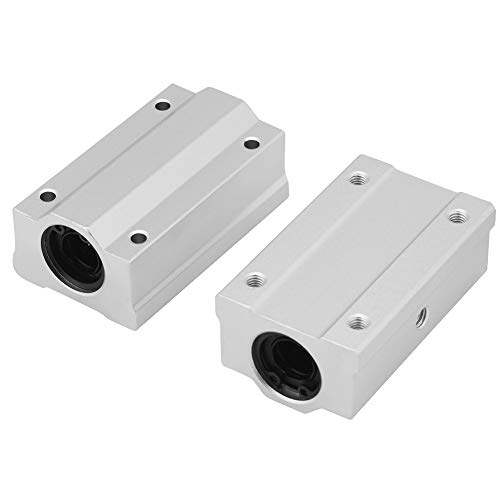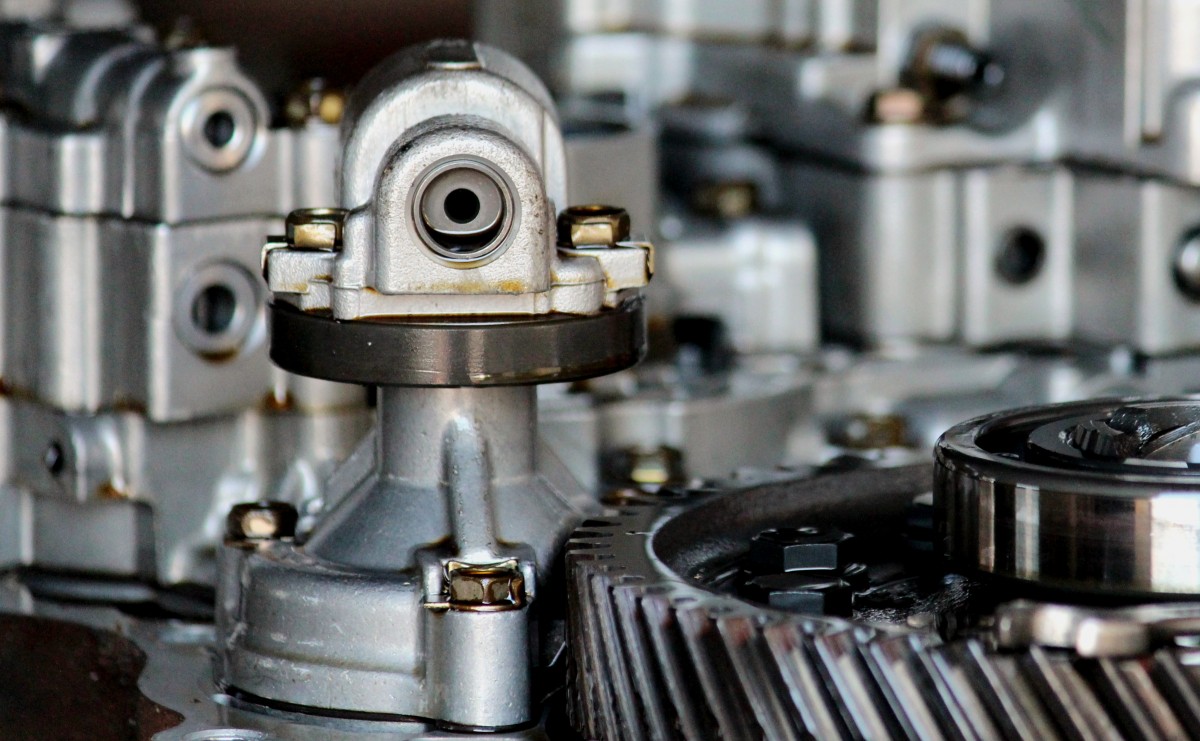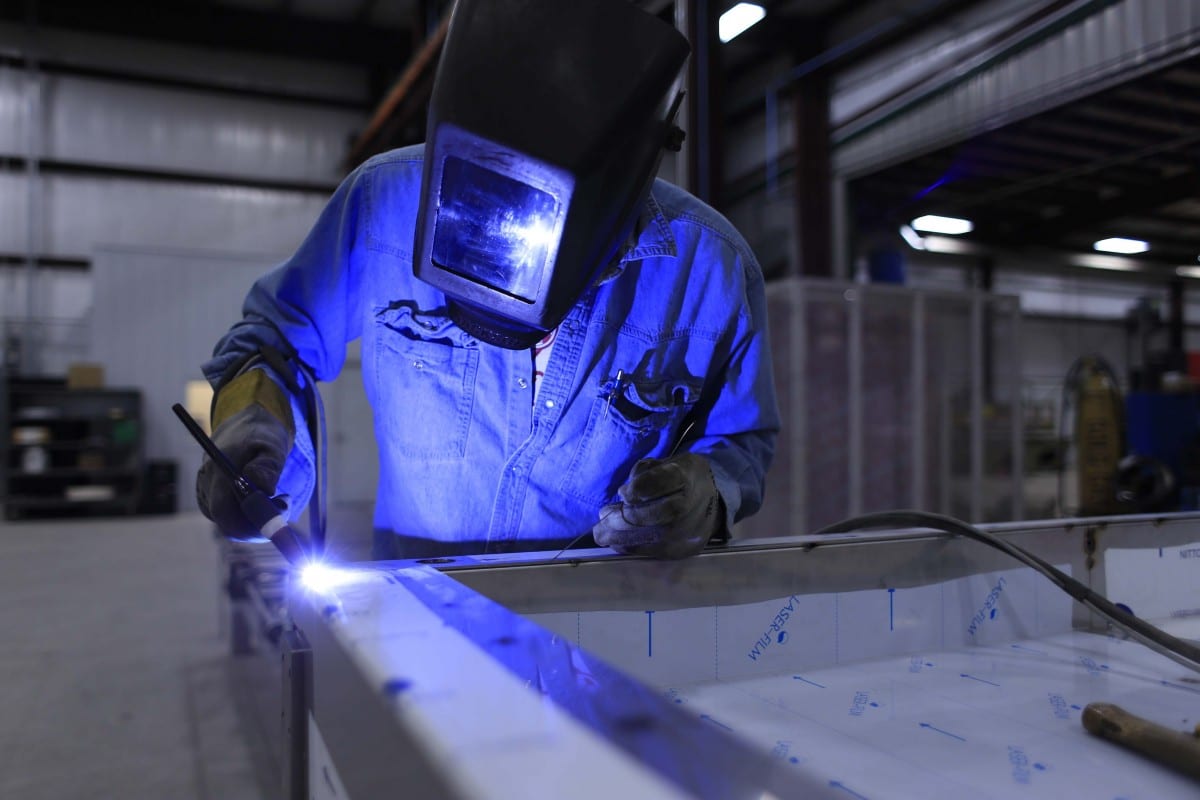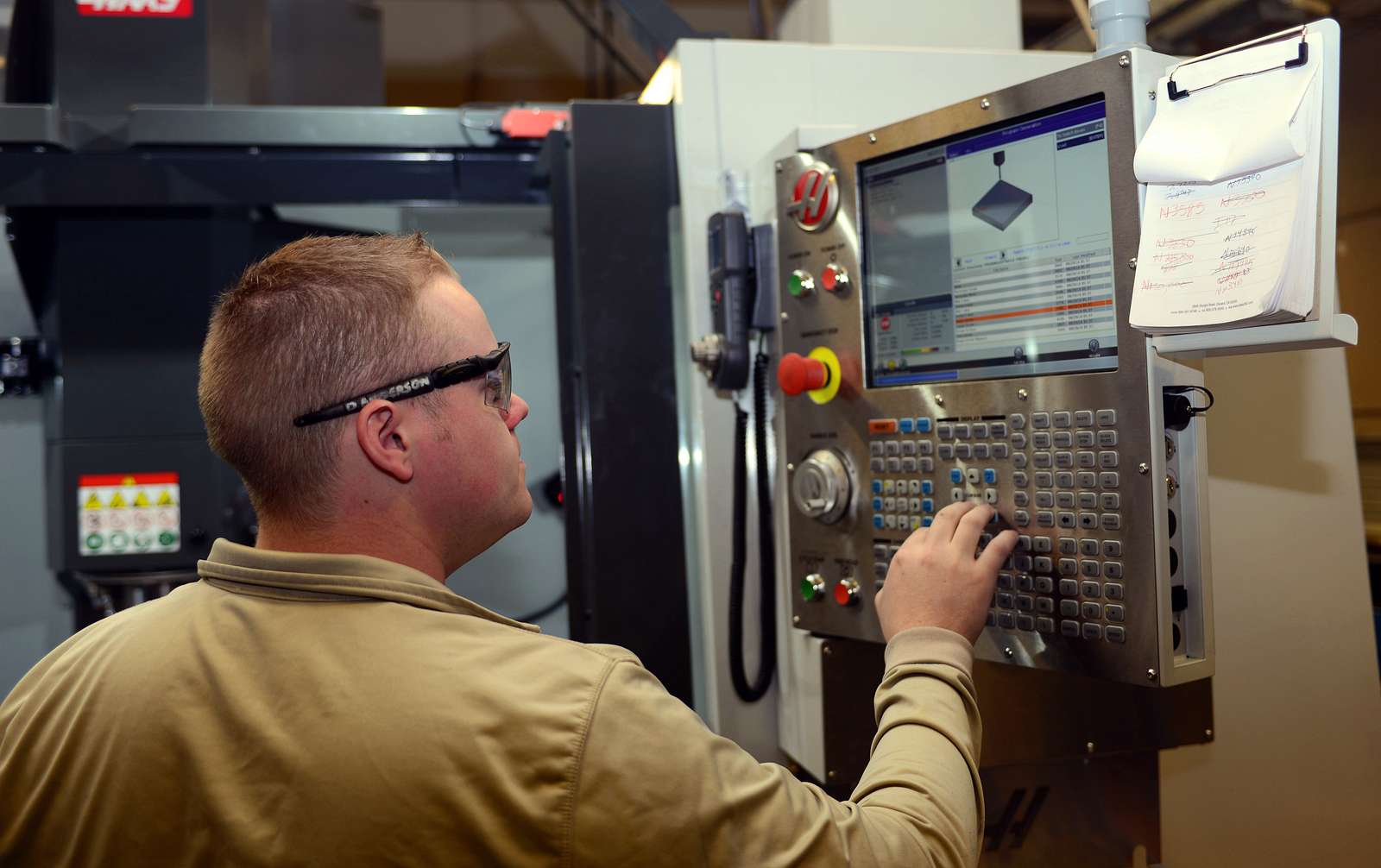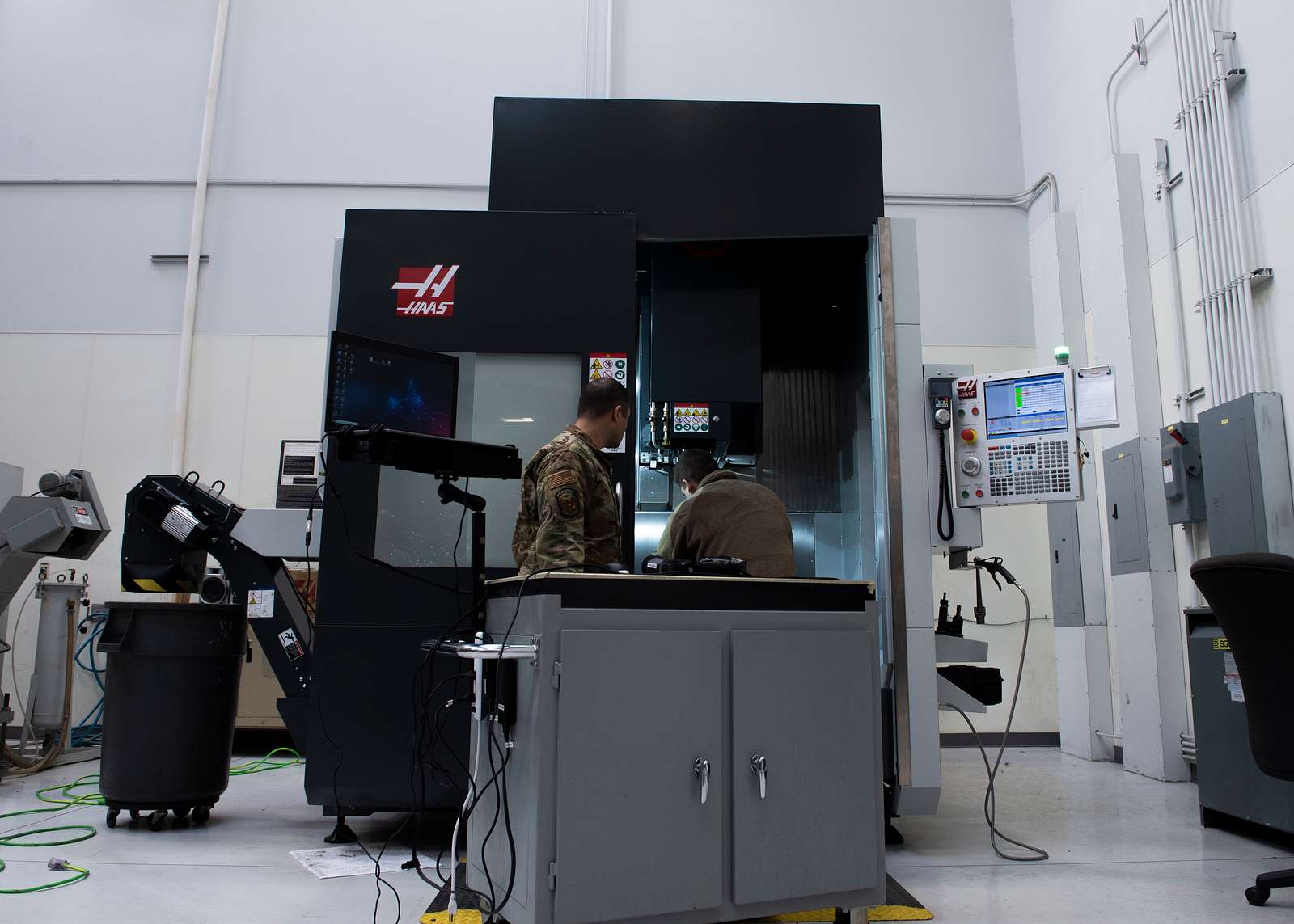
These teams are not exactly cheap, for that reason, you have to make a good CNC machine maintenance to prevent, delay or reduce the impact of breakdowns. In addition, it is also important that you know some spare parts or spare parts that you can buy for your CNC machine. With this guide, we put an end to the entire series of articles on numerical control machining.
The best spare parts for CNC machines
All the Spare parts or spare parts for CNC machines Industrial products are not easy to find in conventional stores or through some online sales platforms. But you can find parts for more modest CNC machines. If you have an industrial machine, you should consult the technical or maintenance service of the brand of machine you have.
As for the the spare parts that can be found more easily, the following stand out:
CNC tools (milling cutters, drill bits, blades,…)
Spare parts (supports, bearings, chains, sensors, motors, spindle,...)
What is the maintenance of CNC machines?
El industrial maintenance Its objective is to keep the equipment or machinery in good condition, in addition to preventing failures and increasing the availability of work teams. There are different types of maintenance to fine-tune machinery, and these can also be applied to CNC machines of any type.
Keep in mind that in companies or industries, machinery is an essential part. Without them, a company might have to stop production until problems are fixed or the affected machine is repaired. And not only that, poor maintenance can also involve risks for the machine operators, and that the products are defective.
For all this, it is essential implement a good policy of industrial maintenance in your company. It will save you a lot of trouble and expense. And, as you can see, you can choose between several types of maintenance depending on the one that best suits the CNC machinery you have chosen, or your company's policy.
What is maintenance for?
The maintenance plans can be planned and unplanned. The first are those that you have planned, such as maintenance or periodic revision of the CNC machine. The unplanned is when an unforeseen failure or problem arises. If we stick to the first type, it can help us:
- Reduce the number of failures of a CNC machine
- Extend the life of machinery
- Operate under safer conditions
- Make the machine work in the best condition for good results
- Avoid or prevent stoppages due to more complex breakages that imply stopping production for a longer time
- Customers more satisfied with the results of the product
- And all this means cost savings
Types of maintenance
On the other hand, it is important to know what types of industrial maintenance exist to determine which best suits your needs:
Preventive maintenance of the CNC machine
El Preventive Maintenance, as its name suggests, is aimed at preventing problems in CNC machines. It is carried out with an established frequency, according to the needs of the equipment, use, etc. For example, carry out a review, replacement, repair, lubrication, etc., every X number of working hours of the CNC machine.
Advantages
- It is programmed, so it can be programmed so that it does not affect production, for example, doing it on holidays, weekends, etc.
- The need for material and necessary spare parts can be calculated, being able to make the purchase in time. This ensures the availability of the necessary resources.
- Availability of technicians guaranteed, when planned.
- Reduces the need for corrective or unplanned maintenance.
- Savings in repair costs or acquisition of new machines.
Disadvantages
- You need to keep good records and not make mistakes.
- It can generate extra costs in spare parts or spare parts that are replaced in advance, before they fail.
- The need to identify the vulnerabilities or elements that most often fail in order to carry out more thorough reviews of them.
Corrective maintenance
El Corrective maintenance It is another type of industrial maintenance that consists of repairing breakdowns as they happen. That is, the one generally used by most small businesses or workshops. As the problems occur, the technicians will repair them.
Advantages
- They don't need logs, tracking, etc.
- If the CNC machine is covered by warranty, it can be used for repair.
Disadvantages
- They can be more damaging to production and are not planned.
- Major problems could arise from the failure that has caused the production stoppage and that is affecting another part or subsystem of the CNC machine.
- You may need extra payments for the time spent by the technicians (or for urgency), and it is not guaranteed that they will be available when the failure occurs.
- The spare parts may not be in stock in the warehouse, which implies a greater loss of time.
Predictive Maintenance
The next type of CNC machine maintenance is Predictive Maintenance. In this case, the CNC machinery and its condition must be well known. Using certain techniques, it is possible to predict which parts or what type of maintenance to carry out to prevent or delay failure, improving productivity and reducing emergency stops.
Advantages
- Interventions at the right time, not as frequent as preventive ones and not as spaced as corrective ones.
- Savings in maintenance compared to preventive.
- Greater availability of equipment or machinery.
- It allows to generate feedback with the experience and to improve the maintenance plans. It will be known which parts need more frequent modifications, repairs, or updates.
Disadvantages
- It supposes a greater investment for the training of technical personnel.
- May require expensive monitoring equipment, sensors, etc.
Modifying maintenance
The next method of maintenance of CNC machines is the modifying maintenance. It is based on modifying the characteristics of the CNC machine to achieve changes in production, such as greater reliability, equipment availability, etc. This maintenance is performed at various stages of the CNC machine's life. For example, when it's a new CNC machine, it may need some minor adaptations to start production, or perhaps modifications to make maintenance easier. In this case, like the predictive one, a detailed study of the machine is needed, and to know it very well.
Maintenance overhaul or zero hours
El maintenance overhaul or maintenance zero hours it is another type where CNC machines are checked at scheduled intervals before failure occurs. The objective is to leave the machine as it was when it had "zero hours" of work, that is, as if it were new.
This maintenance involves change or perfectly repair the parts with the lowest reliability. In this way, it is intended to increase the availability of the machine. In addition, as it is programmed, it is also possible to have the necessary human resources and stock up on the necessary material. Of course, we also try to have the least possible impact on production.
maintenance in use
El maintenance in use It is the lowest intervention of all. It is usually done by the operators or users of the equipment, so it does not require specialized or highly qualified technicians. It consists of simple tasks such as cleaning, lubrication, observing possible defects, retightening screws, adjusting, etc.
How to do the maintenance of CNC machines step by step
A CNC machine or machining center should be able to work for years if properly maintained. Many of these numerical control machines can work intensively for long hours of 8 hours or more, with averages that can range from 40 hours to a few more in the case of industries that operate 24/7. For this reason, it is important to have a maintenance plan, better if it is preventive, and that you can apply:
Daily
- Remove chips.
- Clean the spindle with a clean cloth and a little special machine oil.
- Check lubricant level (if equipped)
- Check coolant level in reservoir (if equipped). Especially if the machine works for several shifts without stopping.
- Check machine parameters, such as temperature, pressure gauge, etc.
- Check for proper operation and calibration.
- Make sure that all security elements are in place and operational.
Weekly
- Clean the exterior surfaces with a mild product, without using solvents.
- Check deposits and change fluids if deposits are present.
- Also check parameters such as water, air pressure, etc.
Monthly
- Check coolant or air filters. They should be cleaned or replaced if necessary.
- During the first 6 months of the installation of the CNC machine it is important to check the leveling monthly and correct it if necessary.
Quarterly
- Check the pipes through which the fluids travel, such as compressed air, that of the suction pump, the coolant, etc.
- It is important to check every 3 months, and during the initial 12 months, the impedance of the electrical network of the ground connection.
Semiannual
- Check the leveling of the machining center and level it if necessary.
Annual
- Check the electrical network from which the CNC machine is powered, especially the impedance of the ground connection.
- If there is, change the gearbox or transmission system oil.
- Do a deeper review.
Tips: How do you make maintenance of a milling machine easier? How to maintain a lathe?
- It operates with the CNC machine disconnected from the electrical network or turned off for greater safety.
- Arm yourself with the right tools and avoid using the wrong tools, as you can force or damage parts.
- Make sure you have the necessary knowledge to perform maintenance.
- Gather all the necessary spare parts or replacements, as well as coolants, lubricants, etc.
- Learn more about the operation and characteristics of your CNC machine model.
- The operator must make sure before starting work that everything is working properly.
- Keep a record of failures to perform an analysis that can provide data on what tends to fail more frequently, that is, the weakest points, to pay more attention during maintenance or try to reinforce them.
- Keeping the tools in good condition will prevent the motors of the CNC machine from having to work harder to perform the machining.
- Check that everything works according to the precision range of your model. If necessary, calibrate the machine. You can use gauges, micrometers, optical comparators, etc. for this.
More information
- CNC machines: guide to numerical control
- How a CNC machine works and applications
- Prototyping and CNC design
- All types of CNC machines according to use and characteristics
- CNC lathe types and characteristics
- Types of CNC milling machines
- Types of CNC router and CNC cutting
- Types of laser engraving
- Other CNC machines: drilling, Pick & Place, welding and more
- How can a CNC machine help in the company
- Buying Guide: How To Choose The Best CNC Machine
- Definitive guide on plotters: what is a plotter and what is it for
- The best CNC machines for leisure and professional use
- The best printing plotters
- The best cutting plotters
- The best consumables for potters: cartridges, paper, vinyl, and spare parts

